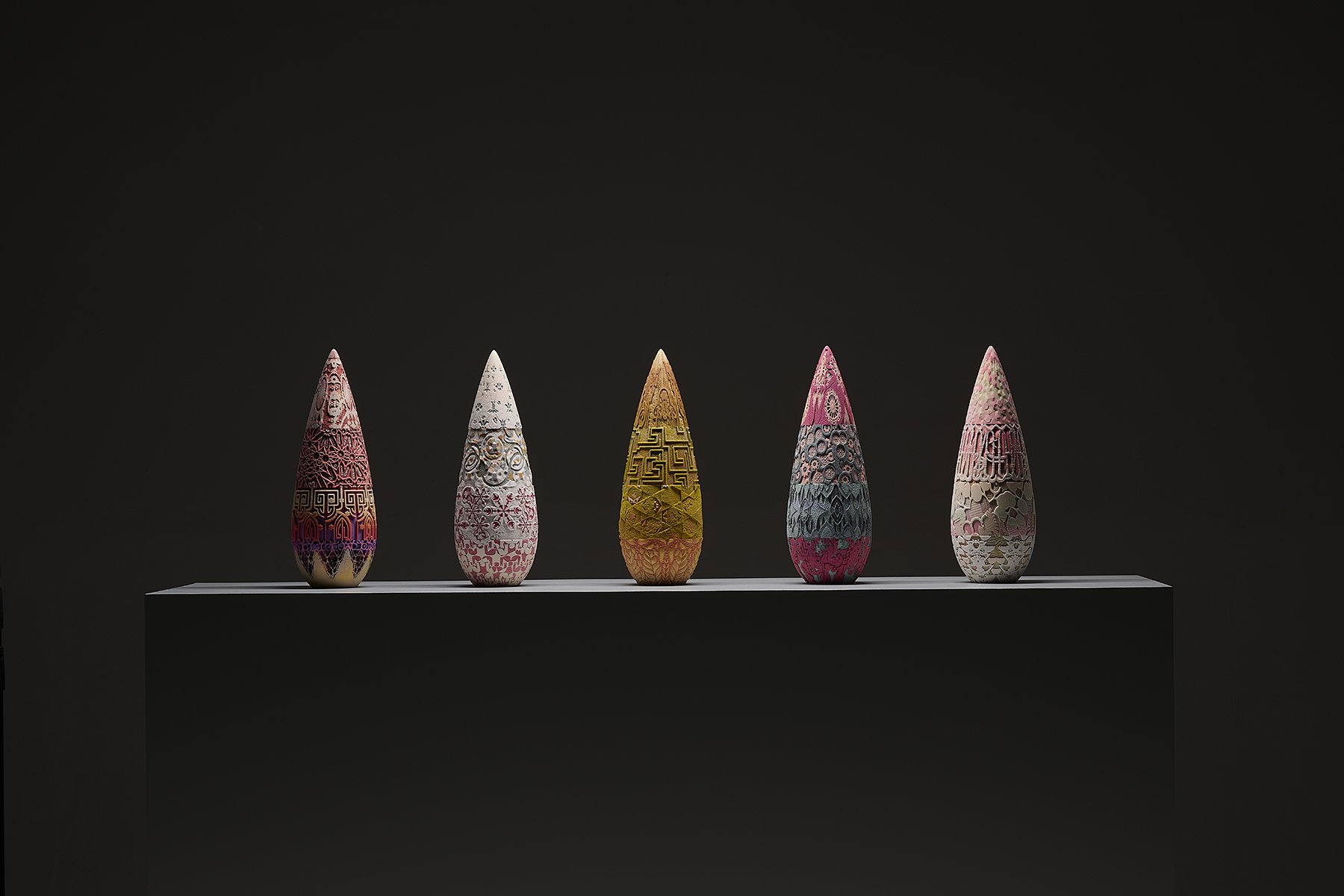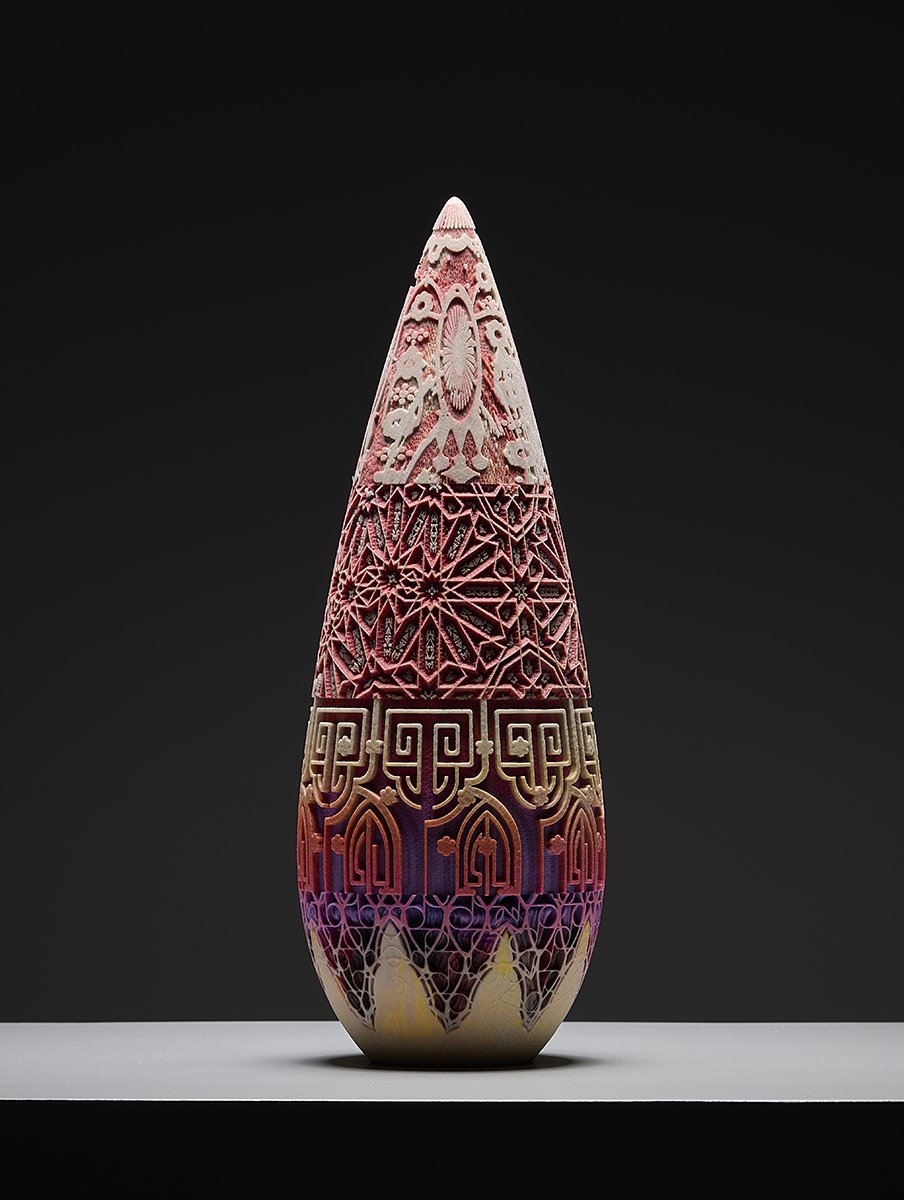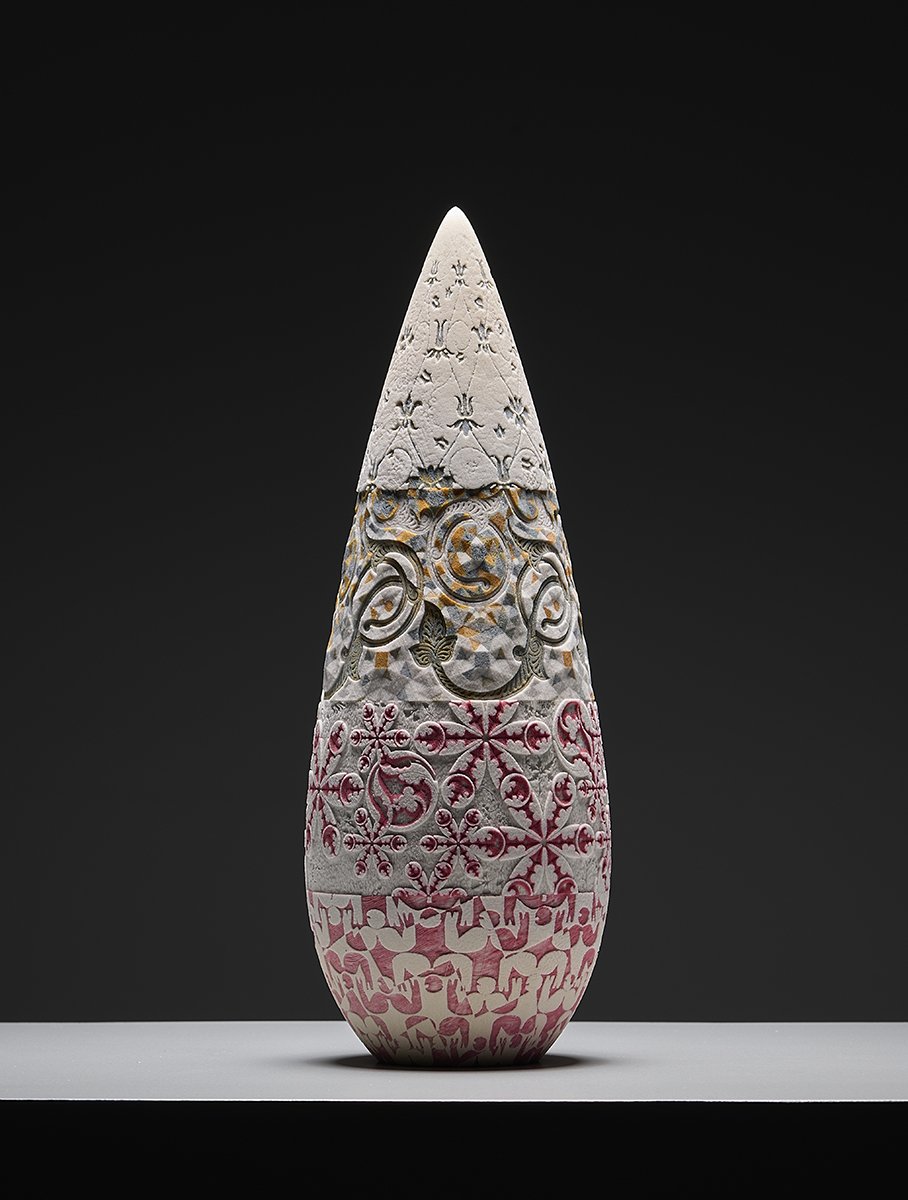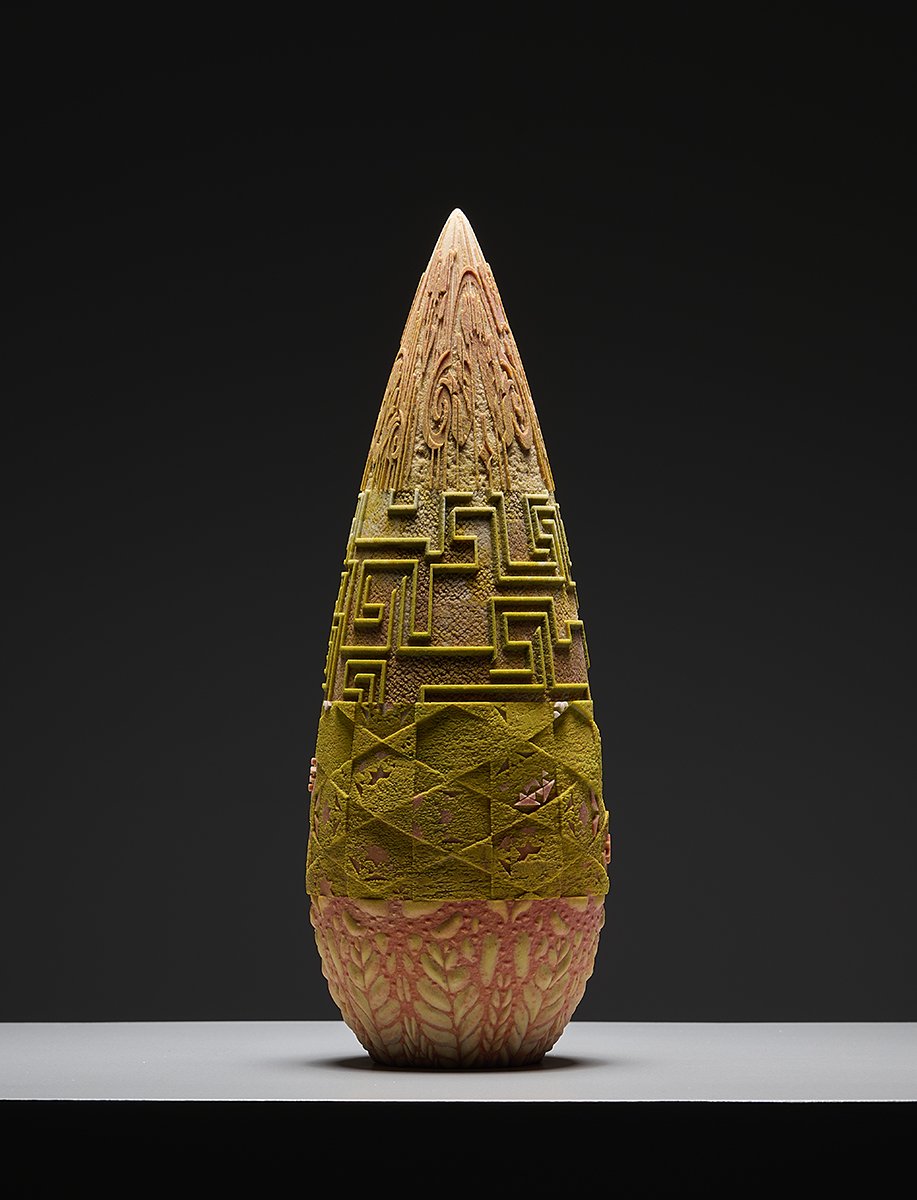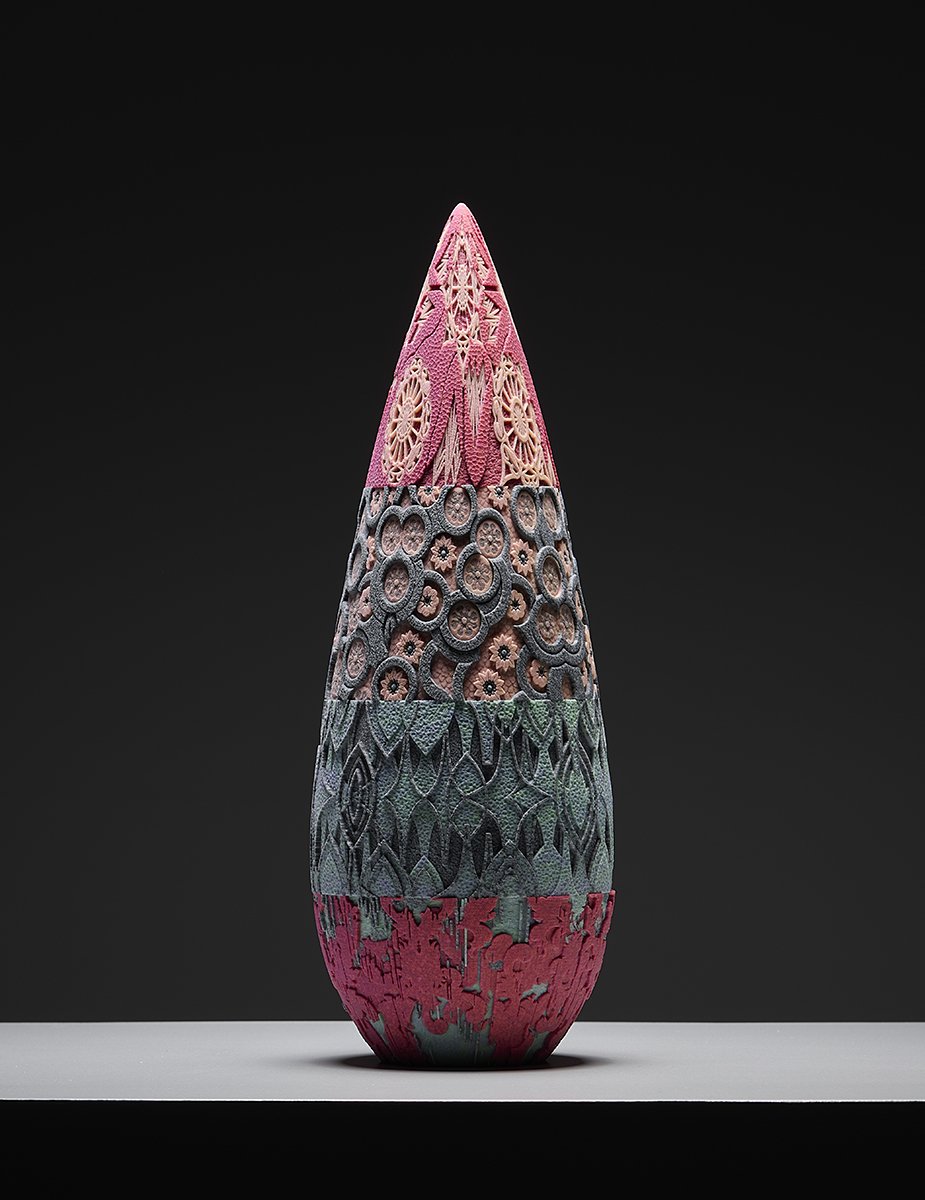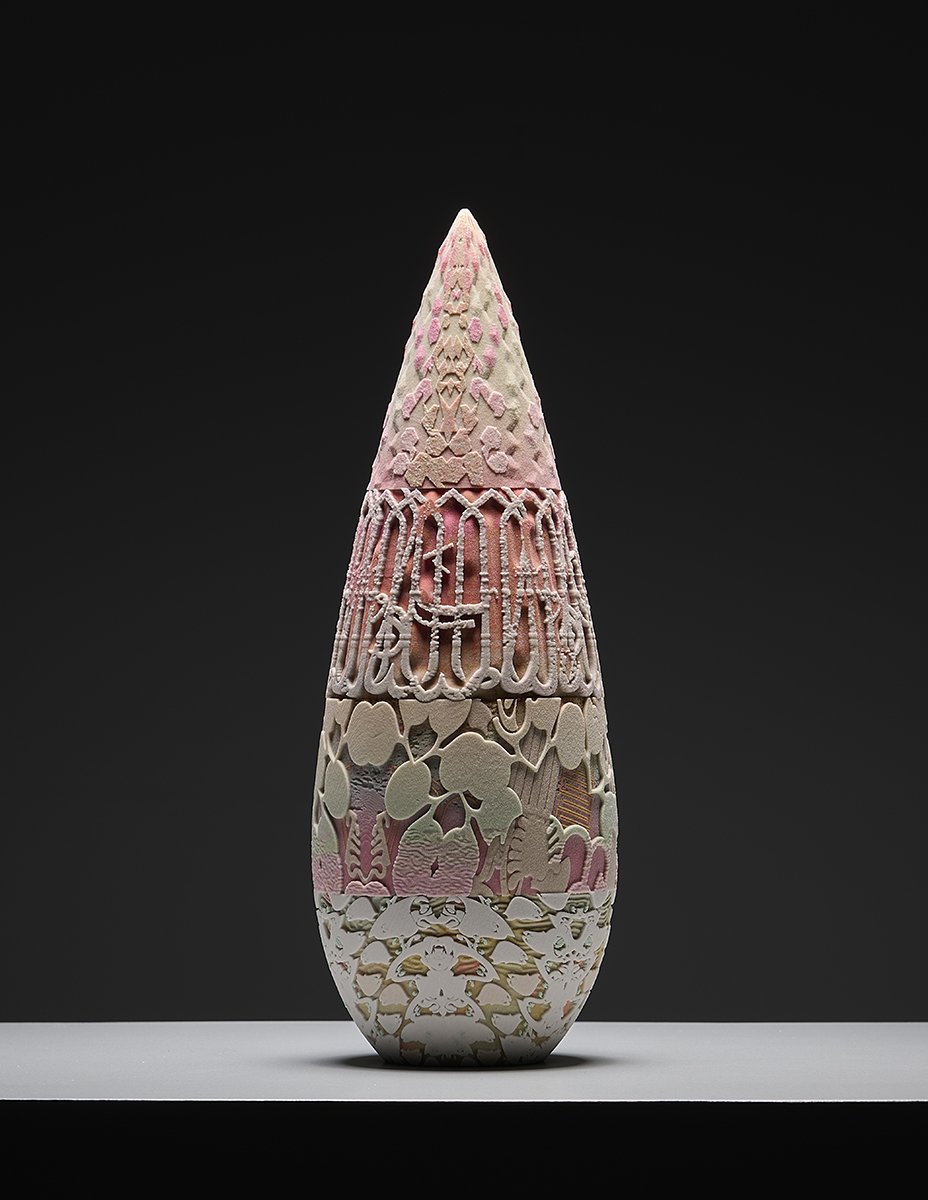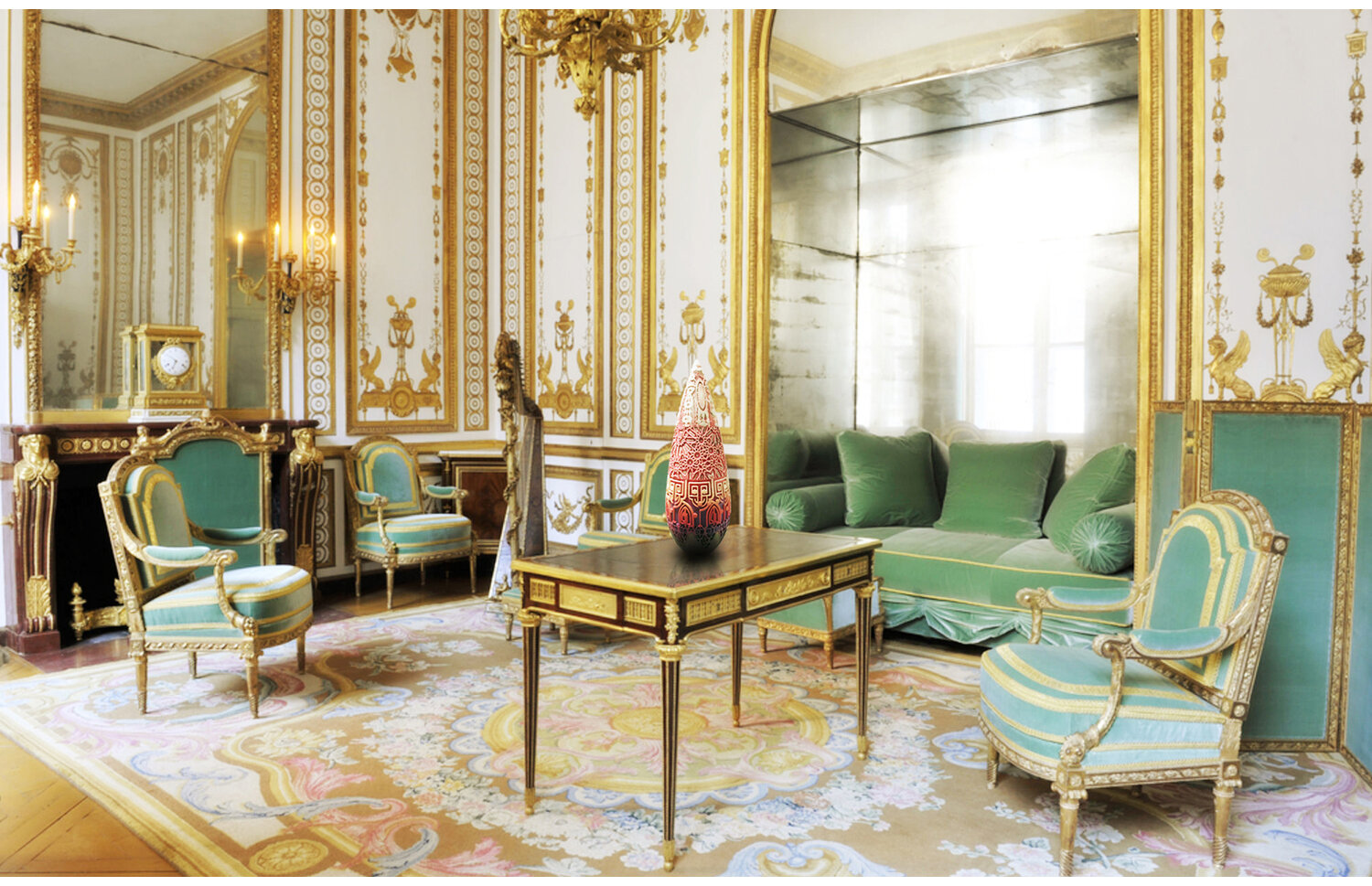Cône de Cadavre Exquis
Harmen Brethouwer with Young & Ayata
photo: Joris Lugtigheid
courtesy Collection Museum Boijmans van Beuningen, Rotterdam, The Netherlands
Material: 3D printed - Full color sandstone - Height 42cm, Fabricated by Mark Sherman at lil3dprinting.com
Years: 2016 - 2022
Team: Kevin Pazik, Sina Ozbudun, Ryan Roark, Tyler Kvochick, Tyler Abell, Mariana Carvalho, Mor Segal, Yang Li, Yi Zhu, Yasmin Suleiman
An Exhaustion of Ornament
The well-known surrealist parlor game of the cadavre exquis resonates through the production of art over the last 100 years. It can be found in the literary cutups of William Burroughs and Brion Gysin, the confrontage/roulage experiments of Jiří Kolář, and the glitch pop music mashups of Girl Talk and Animal Collective. The lasting interest lies primarily in the aesthetic shock that can result from distinctly different elements sharing the same space and forging new associations in the combination. Figures, concepts, materials that would never naturally be found together end up having strange relations sparking novel associations and ideas. An important aspect of this technique is the disjunctive joint which allows the work to remain open to the possibility of dismantlement— or, maybe more importantly, potential recombination.
As fundamental as the arbitrary rupture is to the exquisite corpse, it is also necessary for there to exist a framework, a common playing field, a medium of exchange within which to associate, shuffle and recombine. This could be written language, drawn lines on paper, or digitally sampled sound, but without this shared space, the technique will not work. Although the exquisite corpse was a decidedly early 20th-century experiment, there is an important document 70 years prior that could be considered a precedent, albeit one not commonly associated with surrealism or avant-garde modernism. The item to which I refer is Owen Jones’s The Grammar of Ornament of 1856.
The multi-year project known as the Exquisite Corpse Cones (2015-2022) consists of five 42 cm high digitally fabricated cones articulated with patterns inspired by The Grammar of Ornament. For each object, four ornamental motifs were selected at random from the twenty categories in Jones’s book. These patterns became the starting point for the development of new motifs built as low reliefs into the surface of Harmen Brethouwer's cone object. Each pattern was given to a different designer working in the architectural practice of Young & Ayata, who designed the new articulation as a three-dimensional ornament. The only guides were a horizontal quarter slice section of the cone and eight points of shared alignment along the seams establishing an underlying grid within which the variations develop. Other than these shared constraints, the individual designers worked with no knowledge of what the others were developing, their ornamental reliefs butted up against each other after they had finished, ala an exquisite corpse.
Full Text Here
© All content © Young & Ayata

